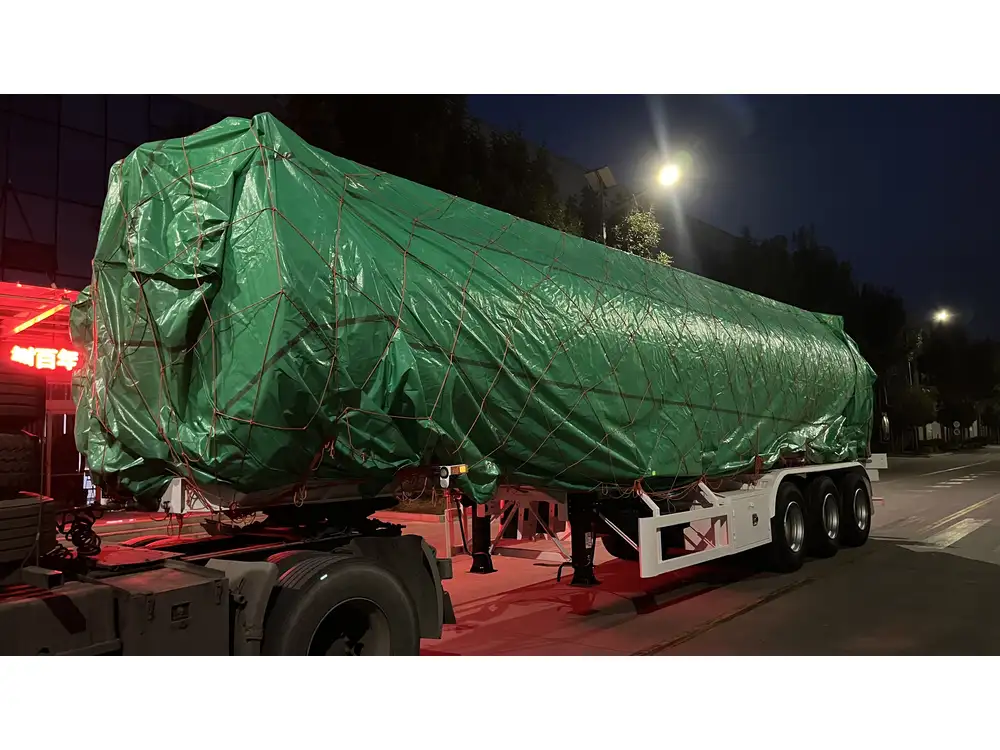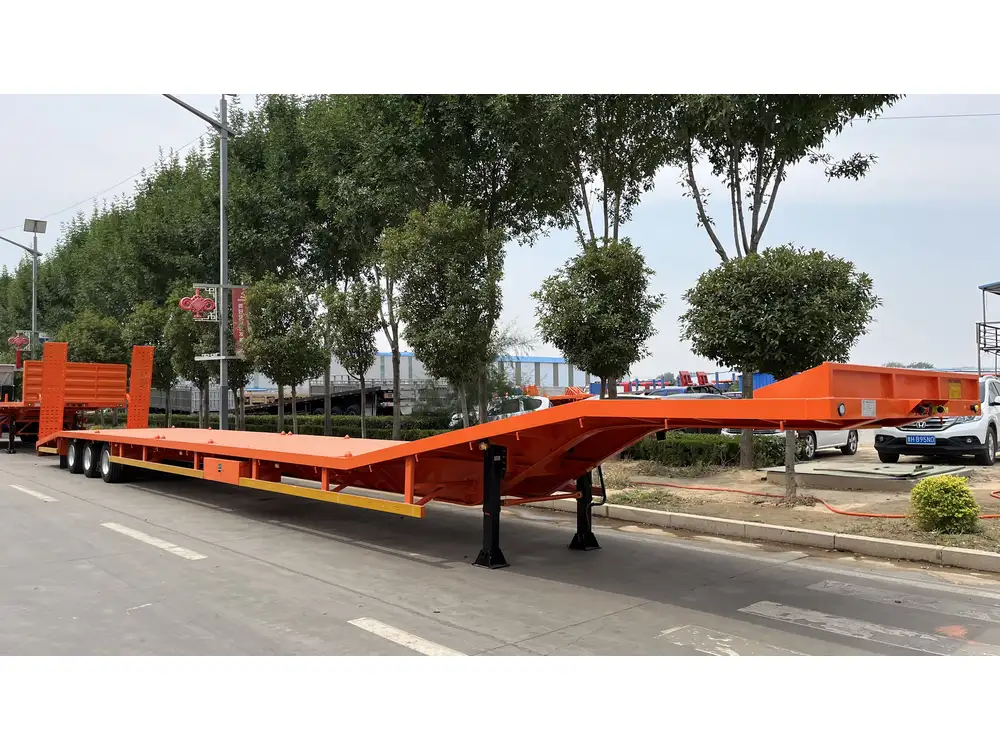When operating semi-trailers, particularly in the transport of liquids, understanding how to effectively and safely empty trailer holding tanks is crucial. Trailer holding tanks are designed for temporary storage of various types of liquids, including waste from RVs, wastewater from mobile toilets, or even agricultural liquids. Here, we provide an exhaustive look at the process, techniques, tools, and considerations involved in emptying these holding tanks efficiently.
Understanding Trailer Holding Tanks
Types of Holding Tanks
Wastewater Tanks: Commonly found in RVs and mobile toilets, these tanks collect human waste and are typically equipped with a valve for easy discharge.
Freshwater Tanks: While not waste, these tanks are crucial for transporting water, and proper emptying can aid in maintenance and sanitation.
Liquid Fertilizer Tanks: In agricultural trailers, these tanks store fertilizers for transport. Emptying must be done cautiously to prevent contamination.

Components of Holding Tanks
- Valves: Used for releasing contents.
- Pipes and Hoses: Facilitate the draining process.
- Sump Areas: Low points within tanks where residual liquid may accumulate.
Importance of Regular Maintenance
Regular maintenance of these tanks is essential. Not only does this ensure longevity and efficiency, but it also prevents unwanted smells and contamination. Contaminated holding tanks can lead to serious health hazards and environmental problems.
Step-by-Step Guide to Emptying Trailer Holding Tanks

Preparation Steps
Gather Necessary Equipment:
- Hoses: Ensure these are of adequate length and diameter.
- Waste Pump: A submersible pump may be required for efficient emptying.
- Personal Protective Equipment (PPE): Gloves, goggles, and masks to protect against contaminants.
Identify the Liquid Type:
- Depending on whether you’re dealing with gray water, black water, or chemicals, different techniques will apply.
Choose the Right Location:
- Always empty tanks at designated sewage disposal sites or treatment facilities to prevent environmental damage.
Procedure for Emptying Tanks
Safety First
- Wear your PPE.
- Ensure the trailer is parked on a level surface.
Connect the Hose
- Attach one end of the hose to the discharge valve of the trailer. Make sure the connection is secure to prevent leaks.
Open the Valve
- Open the discharge valve slowly to avoid splashing or backflow.
Utilize a Pump (if necessary)
- If gravity drainage is not effective, employ a waste pump. Submerse the pump in the tank and switch it on for effective drainage. Ensure the discharge end is directed toward the sewage disposal area.
Monitor the Drainage
- Keep an eye on the flow rate to avoid overflows or back pressure, which can cause tank damage.
Close the Valve
- Once the tank is empty, securely close the discharge valve. Take care to tighten it properly to prevent leaks.
Disconnect the Hose
- Carefully disconnect the hose to prevent residual liquid from spilling.
Cleaning the Tanks
After emptying, it’s imperative to clean the holding tank to eliminate any buildup or odor.
Flush the Tank:
- Use a hose to add clean water into the tank, swishing it around, and then drain it again. This can be repeated until clear water exits the discharge.
Use Cleaning Solutions:
- Employ tank cleaning products designed for this purpose. Follow manufacturer instructions carefully.
Rinse Again:
- After cleaning solutions are used, rinse thoroughly with clean water.
Check for Residuals:
- Inspect the tank for any left-over waste or odor. If necessary, perform a deep manual clean.

Troubleshooting Common Issues
Clogs:
- Clogs can occur, often due to an inappropriate disposal of items down the tanks. Solutions include using a plumber’s snake or high-pressure water jets to break down blockages.
Pumping Failures:
- If the pump fails, check for power supply issues, clogs in the hose, or air blockage. It may be necessary to replace or repair the pump.
Leakage:
- If leaks occur post-emptying, inspect hose connections and the discharge valve. Seal or repair as necessary.
Essential Tools and Equipment
| Equipment | Purpose |
|---|---|
| Hoses | Transfer liquids from tank |
| Waste Pump | Facilitate drainage if gravity is insufficient |
| Cleaning Brushes | Scrub tank interior |
| PPE (Gloves, Masks) | Protect against hazardous materials |
| Tank Cleaning Solutions | Eliminate odors and residues |
Environmental Considerations
When emptying holding tanks, always prioritize the environment:
Disposal Locations: Only dispose of contents at approved facilities. Dumping waste in unauthorized locations is illegal and harmful.
Prevent Spills: Careful handling of hoses and pumps keeps spills to a minimum.
Chemical Awareness: If dealing with chemicals, become familiar with proper disposal measures and select facilities equipped to handle such materials securely.

Frequently Asked Questions
How often should I empty trailer holding tanks?
The frequency of emptying your trailer’s holding tanks largely depends on usage and tank size. For regular users, it may be ideal to empty tanks every 3-5 days.
What should I do if I notice odors after emptying?
Persistent odors could indicate residues leftover in the tank. Ensure thorough cleaning after emptying, utilizing appropriate tank cleaning solutions.

Are there specific practices for agricultural liquid tanks?
Yes, agricultural tanks may contain fertilizers or other chemicals. Always refer to local regulations regarding disposal and handling of these substances.
What happens if my trailer is overfilled before emptying?
Overfilling can cause pressure buildup, leading to potential tank ruptures. Always monitor tank levels carefully and respond immediately to overflow conditions.
Conclusion
Successfully emptying trailer holding tanks is not merely a task; it is a responsibility. With appropriate preparation, techniques, and considerations for safety and the environment, we enhance our operational efficiencies while protecting public health and ecological integrity. Knowing the ins and outs of this process equips us to tackle challenges efficiently, ensuring compliance and maintaining the longevity of our trailers.
By following the outlined steps and understanding the nuances involved, we can ensure that our trailer holding tanks remain a functional, safe component of our transport operations. Adopting best practices and regular maintenance schedules empowers efficiency and contributes to a cleaner environment, ultimately reinforcing our commitment to sustainable logistics.



